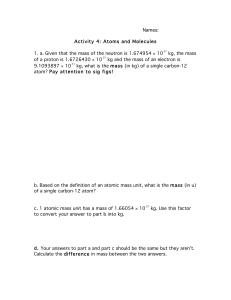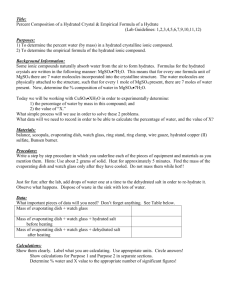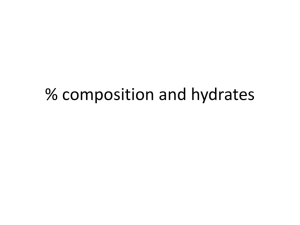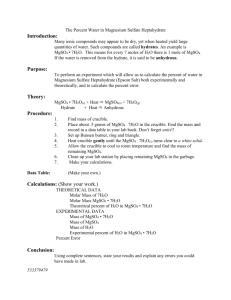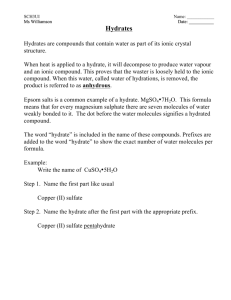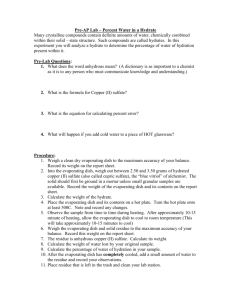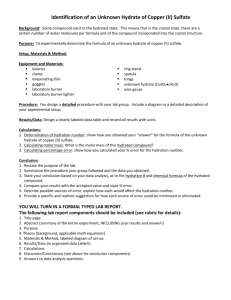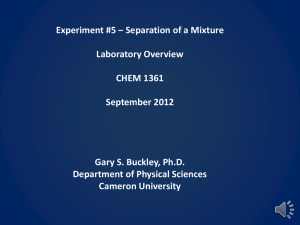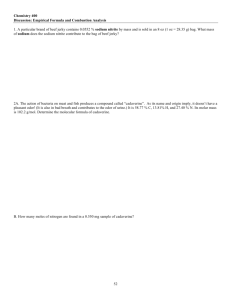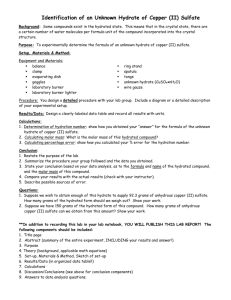Lab: Hydrated Crystals - Dr. Wexler's Chemistry
advertisement
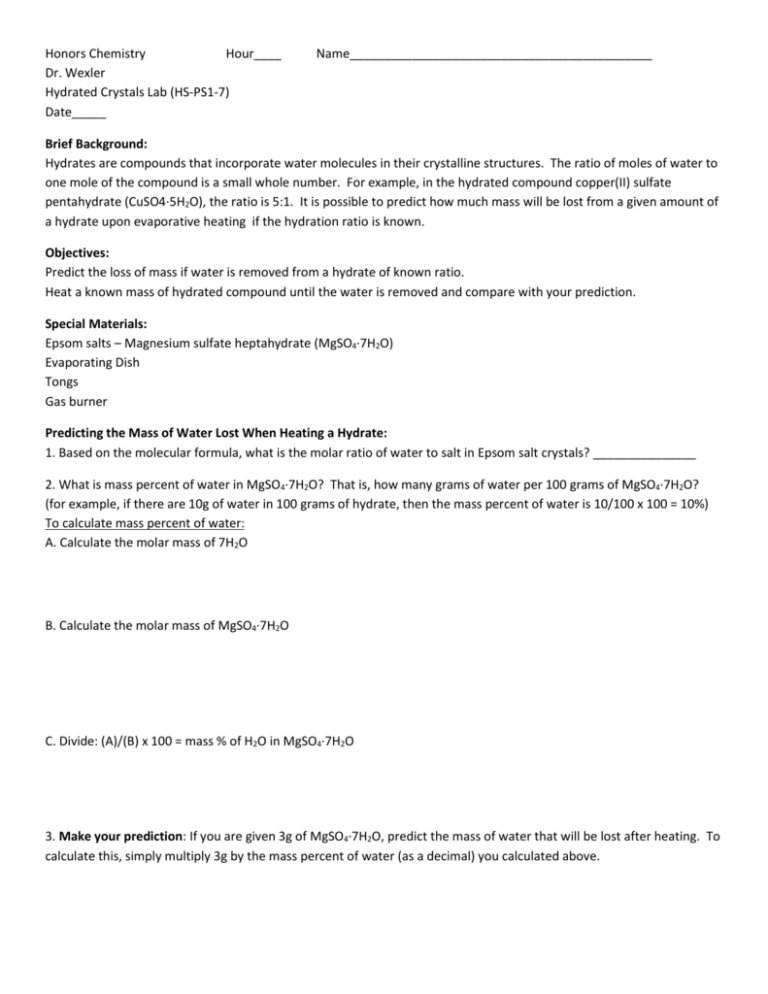
Honors Chemistry Hour____ Dr. Wexler Hydrated Crystals Lab (HS-PS1-7) Date_____ Name____________________________________________ Brief Background: Hydrates are compounds that incorporate water molecules in their crystalline structures. The ratio of moles of water to one mole of the compound is a small whole number. For example, in the hydrated compound copper(II) sulfate pentahydrate (CuSO4·5H2O), the ratio is 5:1. It is possible to predict how much mass will be lost from a given amount of a hydrate upon evaporative heating if the hydration ratio is known. Objectives: Predict the loss of mass if water is removed from a hydrate of known ratio. Heat a known mass of hydrated compound until the water is removed and compare with your prediction. Special Materials: Epsom salts – Magnesium sulfate heptahydrate (MgSO4·7H2O) Evaporating Dish Tongs Gas burner Predicting the Mass of Water Lost When Heating a Hydrate: 1. Based on the molecular formula, what is the molar ratio of water to salt in Epsom salt crystals? _______________ 2. What is mass percent of water in MgSO4·7H2O? That is, how many grams of water per 100 grams of MgSO4·7H2O? (for example, if there are 10g of water in 100 grams of hydrate, then the mass percent of water is 10/100 x 100 = 10%) To calculate mass percent of water: A. Calculate the molar mass of 7H2O B. Calculate the molar mass of MgSO4·7H2O C. Divide: (A)/(B) x 100 = mass % of H2O in MgSO4·7H2O 3. Make your prediction: If you are given 3g of MgSO4·7H2O, predict the mass of water that will be lost after heating. To calculate this, simply multiply 3g by the mass percent of water (as a decimal) you calculated above. Procedure and Analysis: 1. Add 3.00g of Epsom salts to the evaporating dish = mass before heating 2. Heat the evaporating dish for 10 minutes over a Bunsen burner. 3. Allow the evaporating dish to cool. 4. Transfer the contents of the evaporating dish to a zeroed weigh boat on a digital balance. 5. Record the mass = _____________________ g 6. Calculate the change in mass = mass before heating – mass after heating = ________________________________ g. This is the mass of water lost from 3g of Epsom salts. 7. How does this compare with the mass of water you predicted would be lost? Calculate the % error. 8. What physical changes did you observe between hydrated and anhydrous magnesium sulfate?
